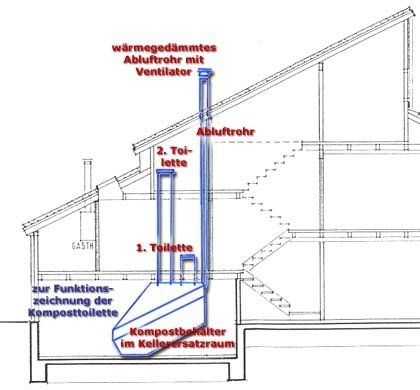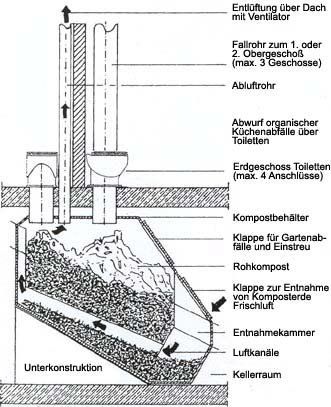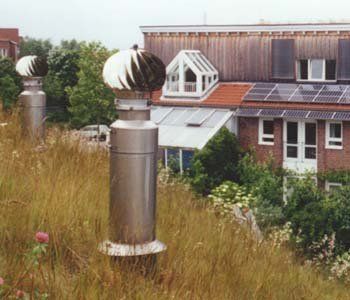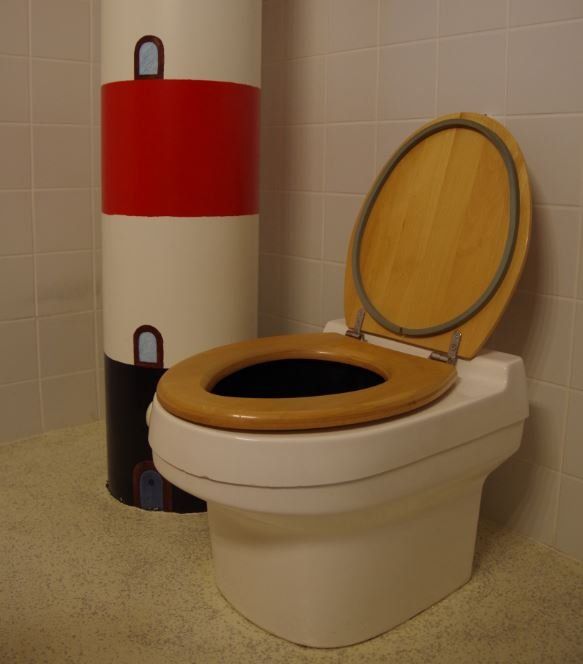Composting Toilets

The Composting Toilets
Two different systems of large-chamber dry toilets (without flushing) are used in the estate: both the original Clivus Multrum from Lindström and the Terra Nova from Berger, which has been further developed from this. Both consist of a compost container (3.5 - 5 m³) and the toilet seats installed vertically above it, which are connected to the container via downpipes.
In addition to all "number one and two businesses", the system also collects garden and compostable green waste from the household. Ventilation guarantees odor-free operation, evaporation of excess liquid and effective composting.
About one hour should be invested per month in processing the raw compost. The first compost can be removed after four years at the earliest (approx. 40 liters per year and person).
The residents use the compost obtained for fertilization and save a lot on running costs every month: the combination of composting toilet and herbal STP enables exemption from wastewater fees as an exception. Nonetheless, it takes time to get used to and learn how to care properly for "the animal in the basement".
Here is a functional drawing of the "Terra Nova" model (image courtesy of Berger Biotechnik):


With individual residents, minor difficulties arise from time to time. Temporarily they report fruit flies in the container or the composting takes place unevenly (the compost is too moist or too dry).
The advantages over flush toilets clearly outweigh this: approx. 50 liters of water per person per day are saved, the faeces do not have to be transported kilometers to the sewage treatment plant and cleaned there at great expense, and there are no more stinking "quiet places".
Toilet seats
The toilet seat is similar to a conventional toilet seat. However, seat and lid are provided with a sealing ring so that the system cannot draw air over the toilet seat.
The downpipe in the background connects a second toilet seat from the upper floor to the compost bin in the basement.


The Composting Bin
This is the compost bin that needs to be placed in the basement. Compostable material can be poured into the upper flap, such as crocheted crops from the garden or kitchen waste.
The lower chamber is the removal chamber.
The left tank was rebuilt at a later date to make the system more maintenance-friendly.
Die Kompostentnahme
The ripe compost should be removed once or twice a year. To do this, the lower removal chamber gets opened and emptied. The compost can be used as a valuable fertiliser, but to be on the safe side it should not come into contact with plants that are intended for consumption.



